The Australian Bureau of Statistics (ABS) recently revealed that retail sales volumes decreased for the third consecutive quarter, the first time this has happened since 2008.
Retail volumes also fell by 1.4% year on year, the first time this has happened since 1990 (ex. pandemic):
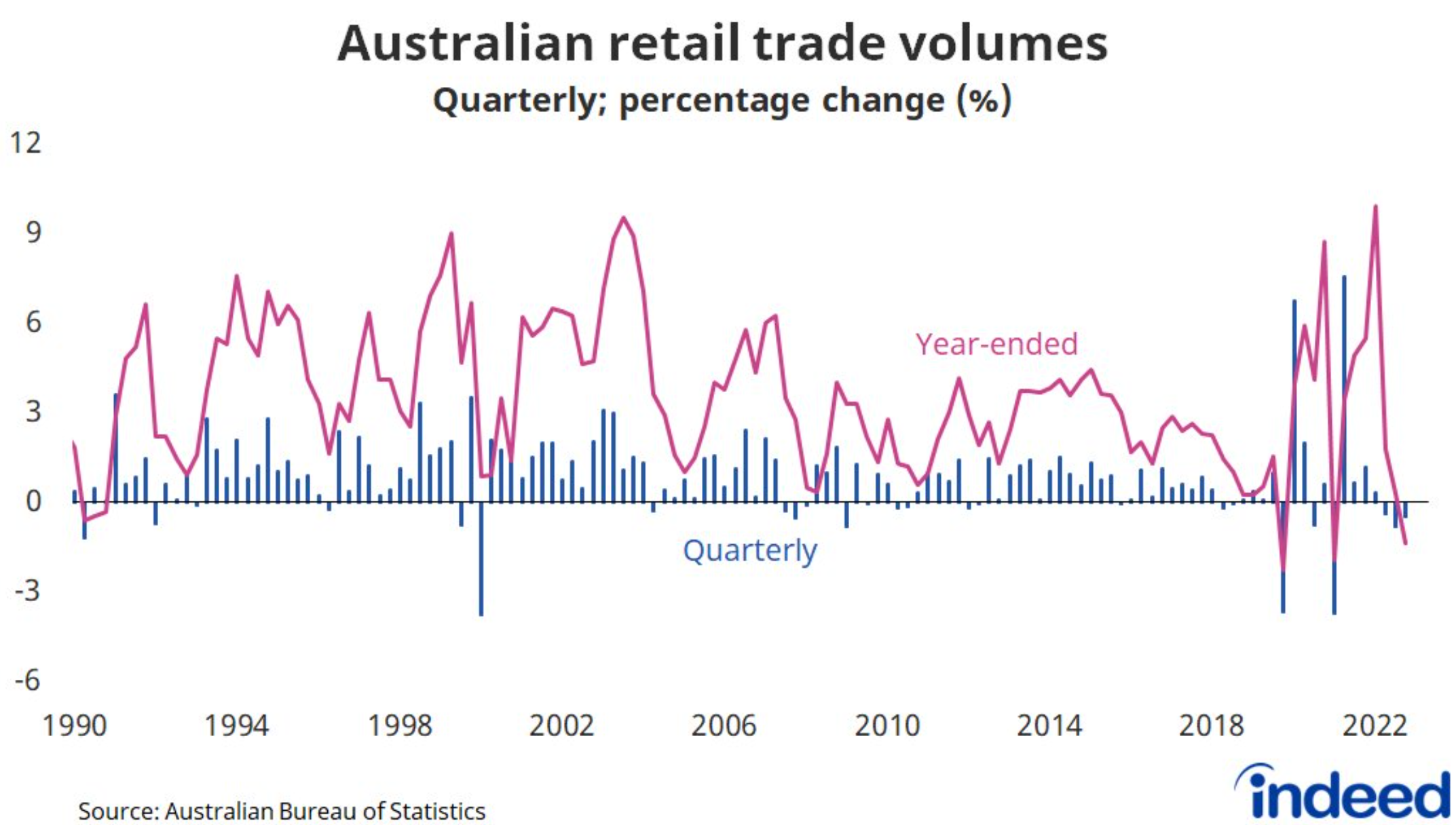
On Thursday, the ABS released its Household Spending Indicator for August, which reported that households are cutting back hard on discretionary spending, with more income being consumed by essentials:
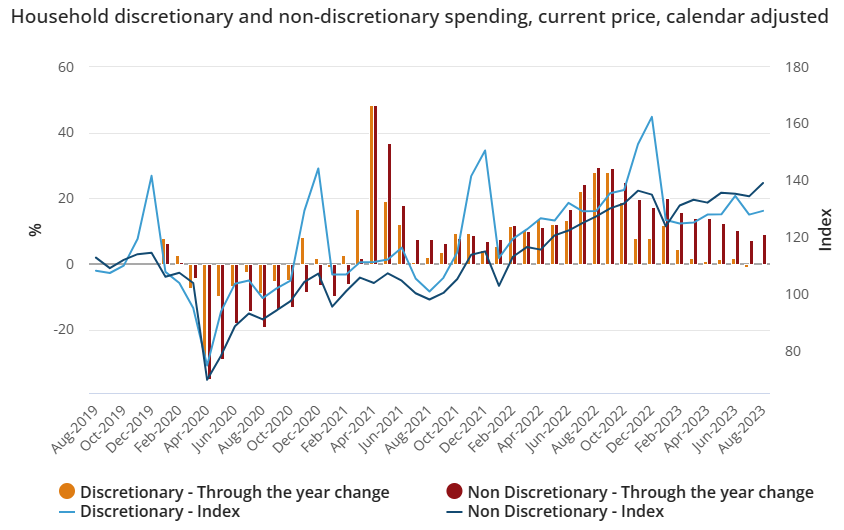
Non-discretionary spending rose 9.1% year-on-year, driven by spending on transport, health, and catering services.
By contrast, discretionary spending was unchanged (0.0%), with rises in accommodation services and recreational and cultural services offset by falls in furnishings and household equipment.
When adjusted by the circa 2.5% growth in the nation’s population and the 5.2% rise in CPI inflation in the year to August, it is clear that Australian households are cutting back hard where they can.
Given that household consumption comprises around 55% of average economic growth, this is obviously bad news for the economy.
As illustrated below, when household consumption falls, the economy tends to follow:
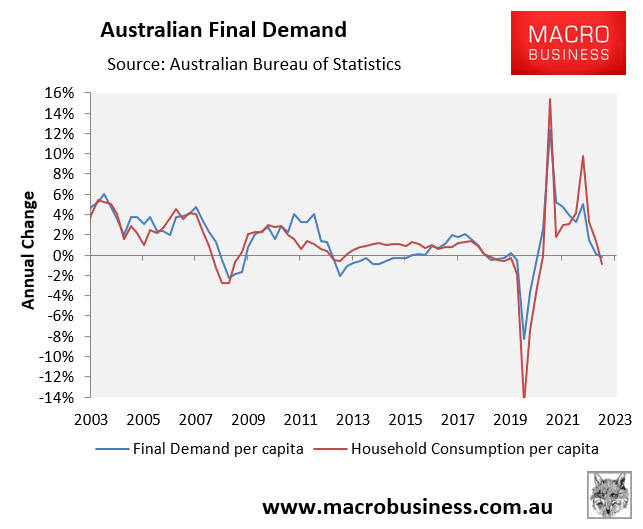
This decline in real household consumption has also occurred despite a sharp fall in the household savings rate to just 3.2% – the lowest level since the June quarter of 2008:
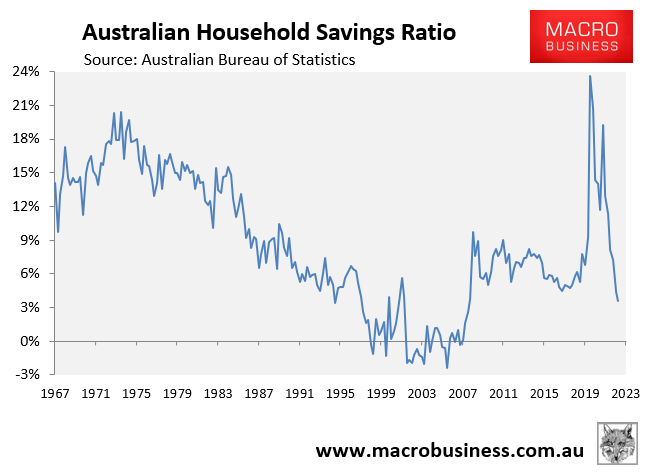
Clearly, the approximate doubling of mortgage interest repayments in the year to June has hit households hard, as has the surge in rents:
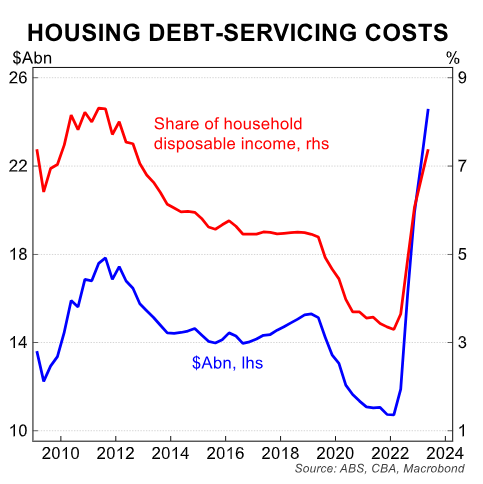
The Albanese Government’s record immigration program is the only thing preventing Australia from entering a “technical recession” – that is, two consecutive quarters of negative economic growth.
Even if a “technical recession” is avoided, everyone’s share of the nation’s economic pie will be reduced.

